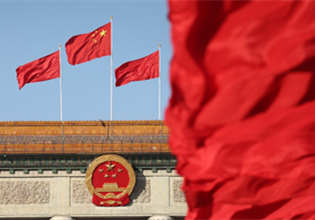Inner Mongolia makes progress in economic, social development
The annual government work report of North China's Inner Mongolia was unveiled during the second session of the 14th Inner Mongolia Autonomous Regional People's Congress, showcasing the region's remarkable economic and social achievements over the past year.
Economic highlights
The region achieved 7.3 percent GDP growth, the third-highest growth rate nationwide, marking the region's highest national ranking since 2010.
Per capita GDP surpassed 100,000 yuan ($13,698.63), with a 7.4-percent increase in the added value of industries above a designated size, placing Inner Mongolia in the seventh place in the country.
Furthermore, fixed asset investment surged by 19.8 percent, ranking second nationally.
In addition, foreign trade volume soared by 30.4 percent, ranking third nationally.
Enhanced energy and food security
Significantly strengthening its national energy capacity and food security, the region produced 1.22 billion metric tons of coal, surpassing its 945-million-ton coal supply target.
With a total installed capacity exceeding 200 million kW, Inner Mongolia achieved first place in ten categories, including coal supply and dispatch, total and new installed capacity of power generation, total and dispatched electricity, new energy power generation, and coal-to-gas production capacity, effectively meeting the energy demands of 29 provinces.
Agricultural achievements
In the agricultural sector, the region witnessed growth in all aspects of grain production, including sown area, yield per unit, and total output, resulting in a total grain output of 39.58 billion kilograms, marking its 20th consecutive bumper harvest and the sixth highest grain output in the nation.
Additionally, major meat production reached 2.85 million tons, while milk production soared to 7.93 million tons, both achieving record highs.
Environmental progress
The region planted 5.56 million mu (370,666.67 hectares) of forests, sowed grass on 18.17 million mu of land, and implemented sand control and desert treatment on 9.5 million mu of land, surpassing its annual targets by 149 percent, 140 percent, and 151 percent, respectively.
Quality and efficiency improvement
Despite a modest 1.4-percent growth in the coal industry, non-coal industries surged by an impressive 12.1 percent.
Various sectors including manufacturing, high-tech manufacturing, strategic emerging industries, technological research and services, software, and information services all achieved double-digit growth.
Industrial investment grew by 32.9 percent, ranking second nationally, with new energy equipment manufacturing investment increasing by 120 percent and manufacturing investment soaring by 46.4 percent.
Furthermore, the region's general public budget revenue surpassed 300 billion yuan.



 Print
Print Mail
Mail





